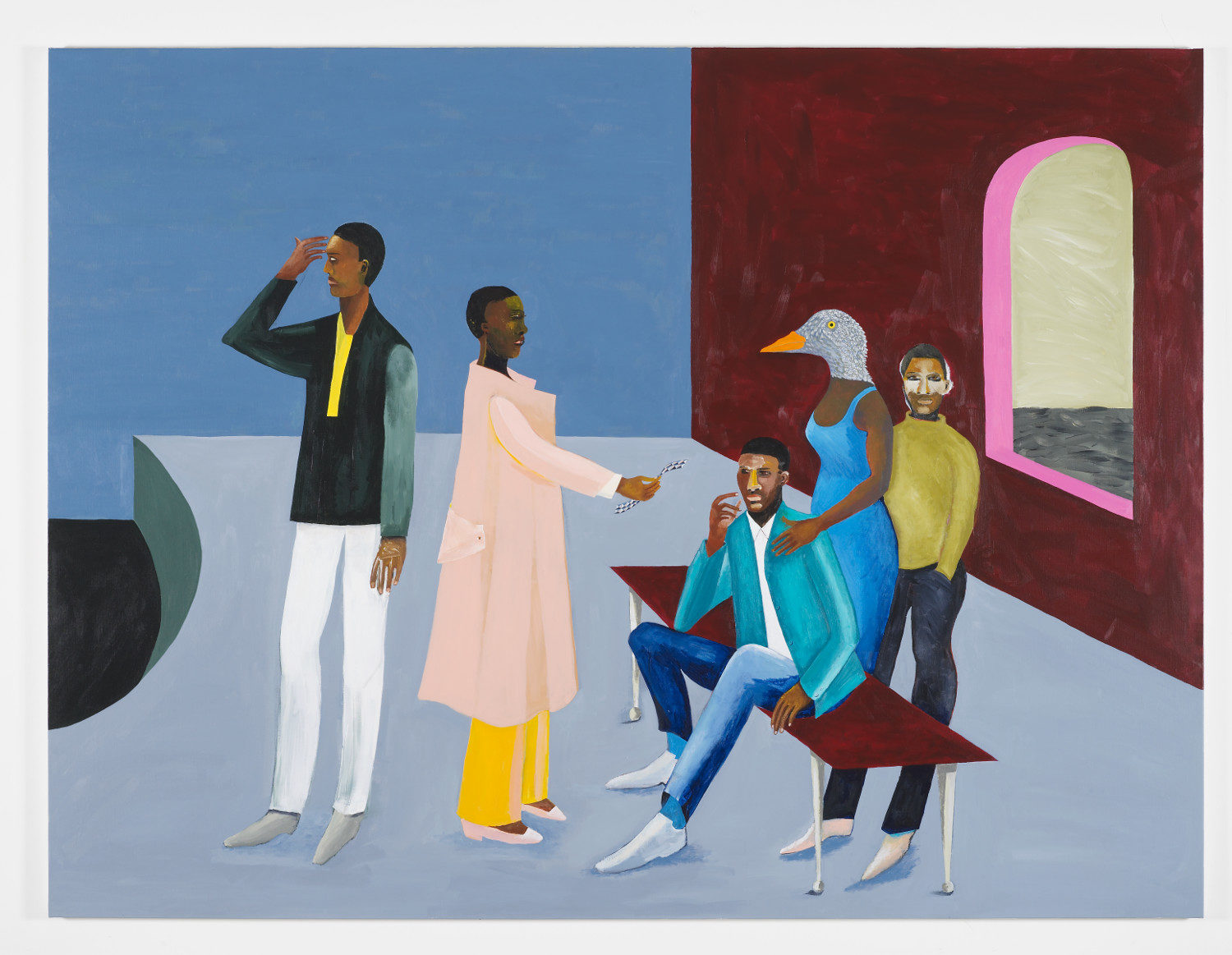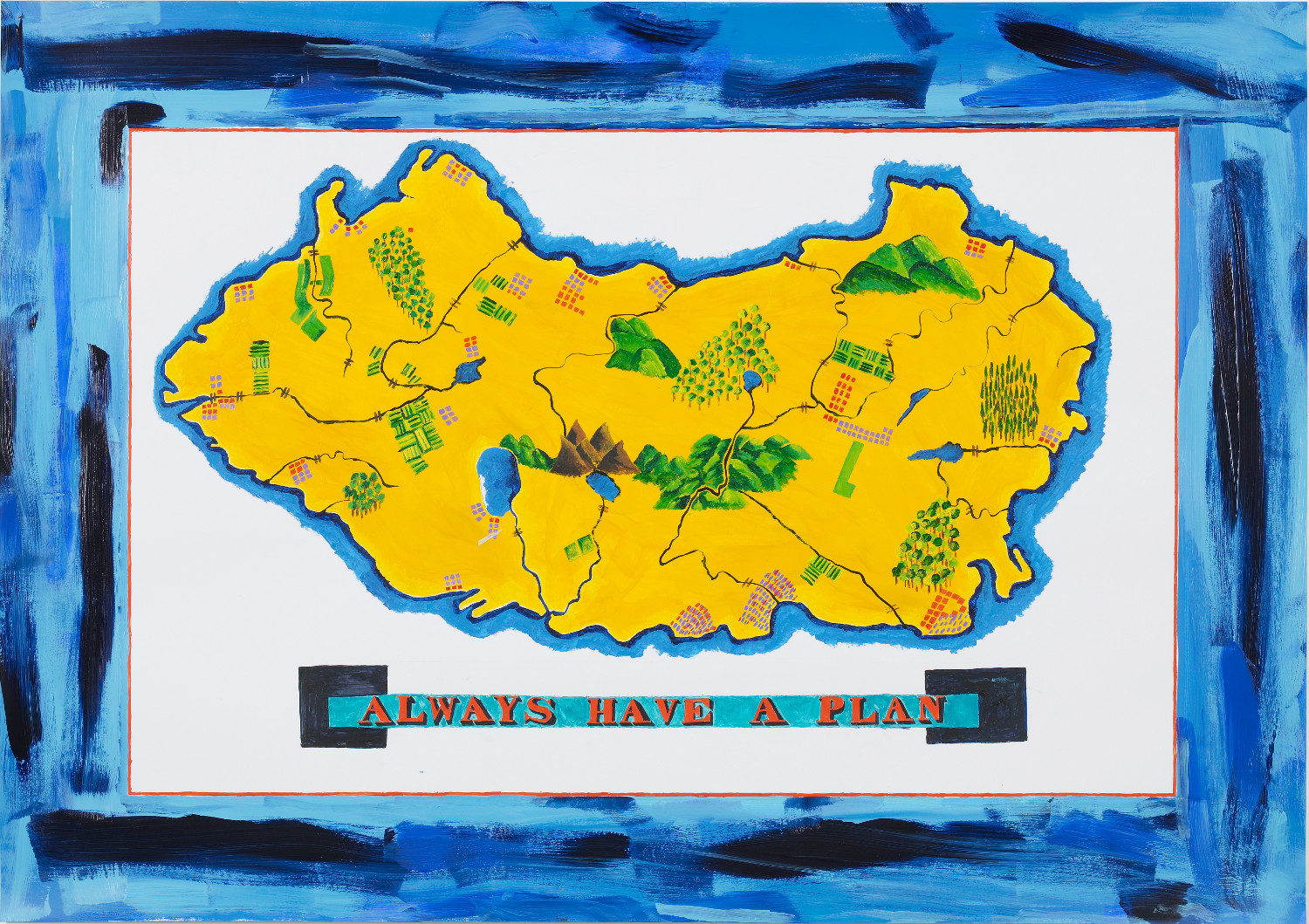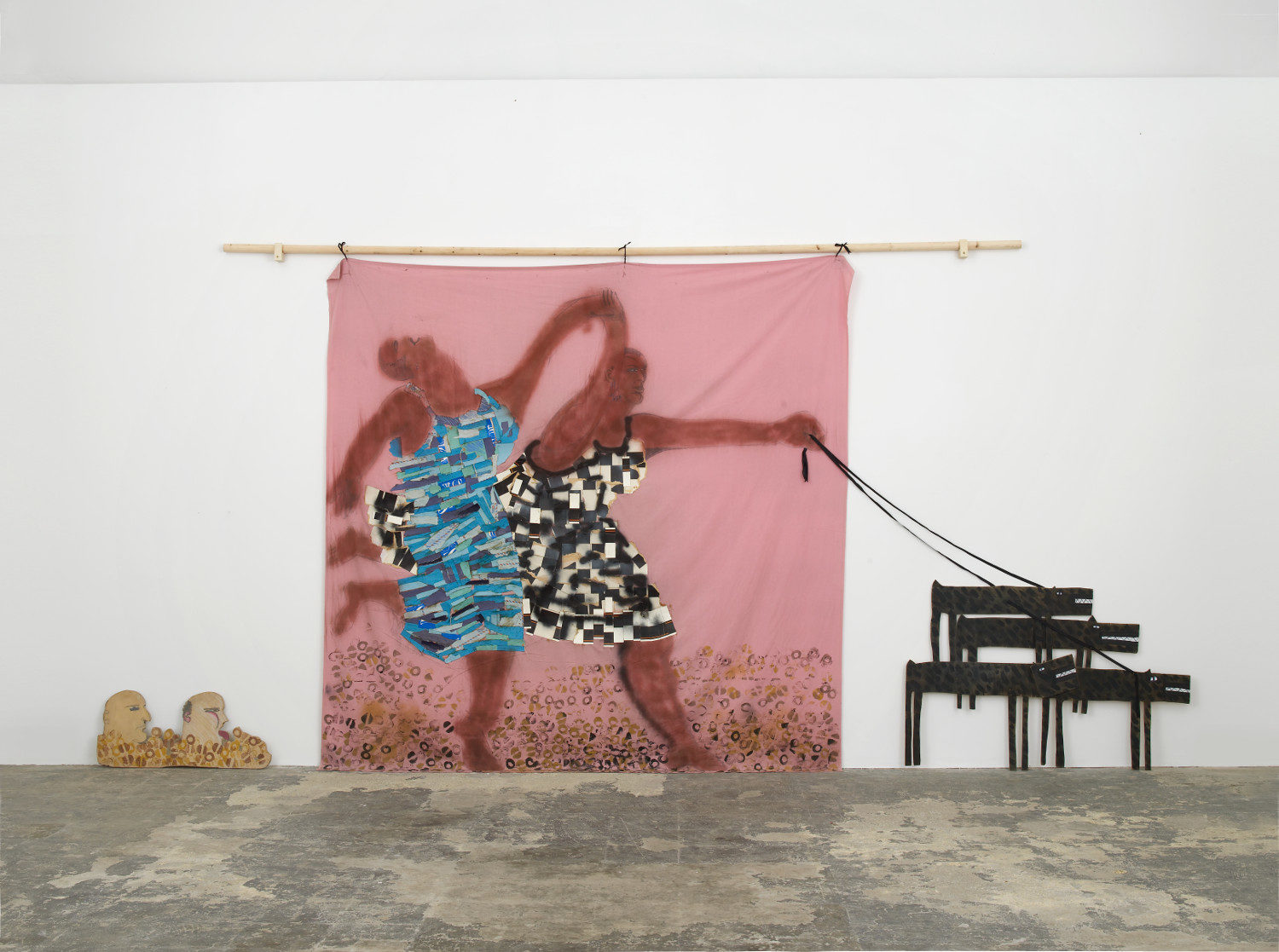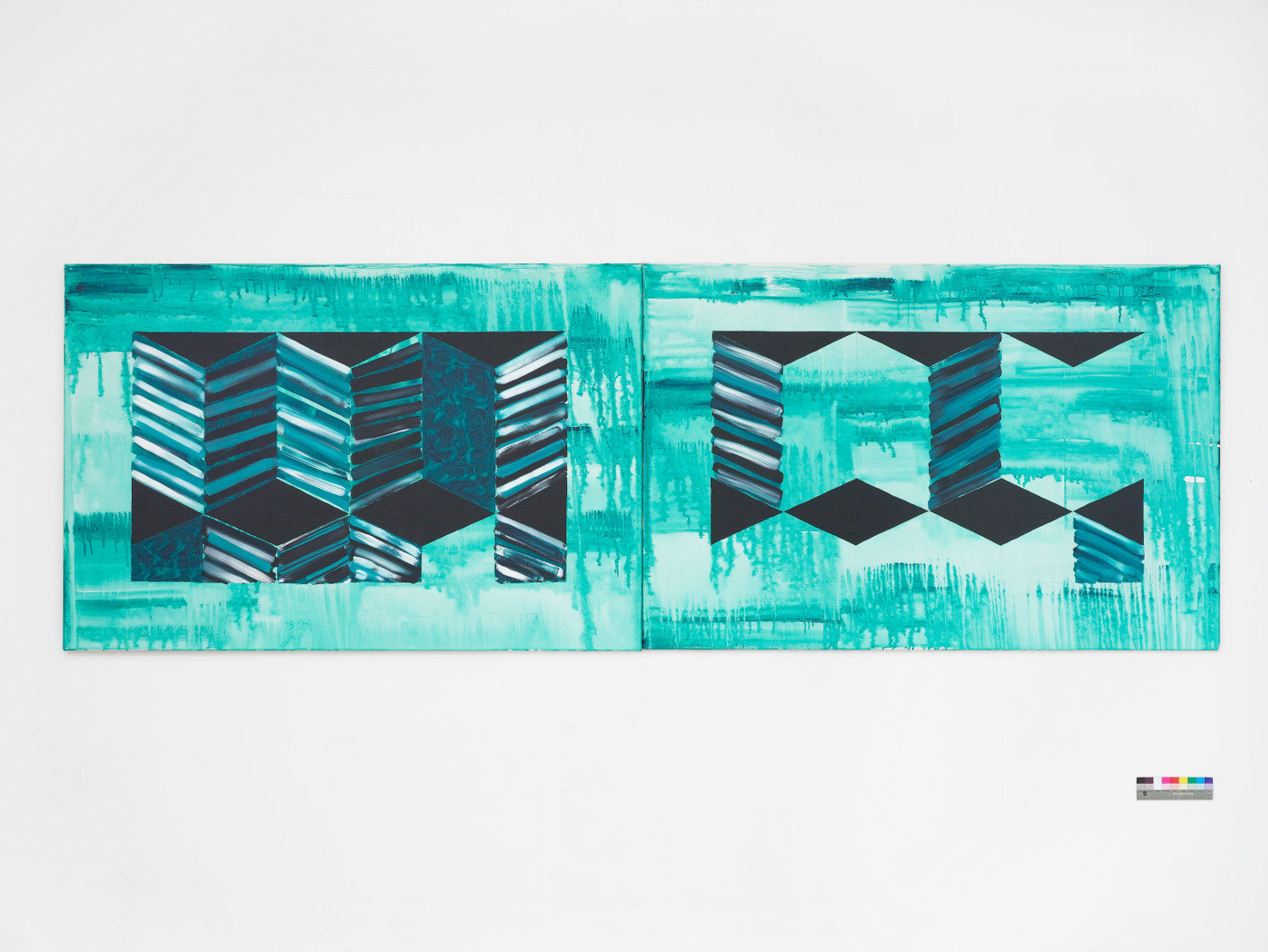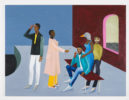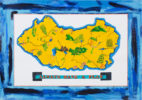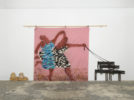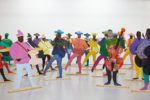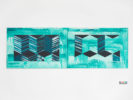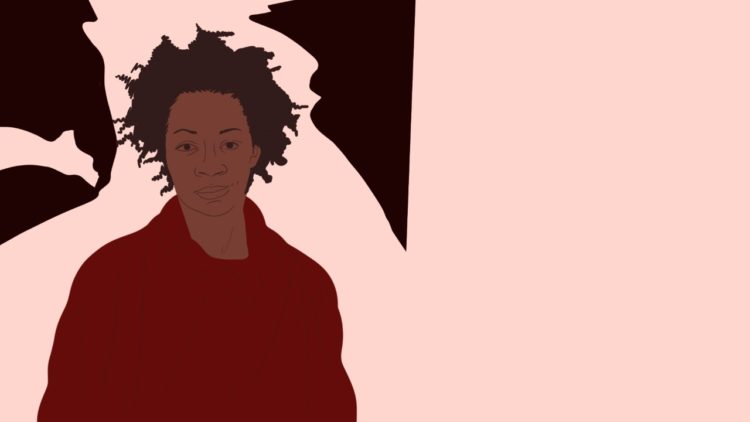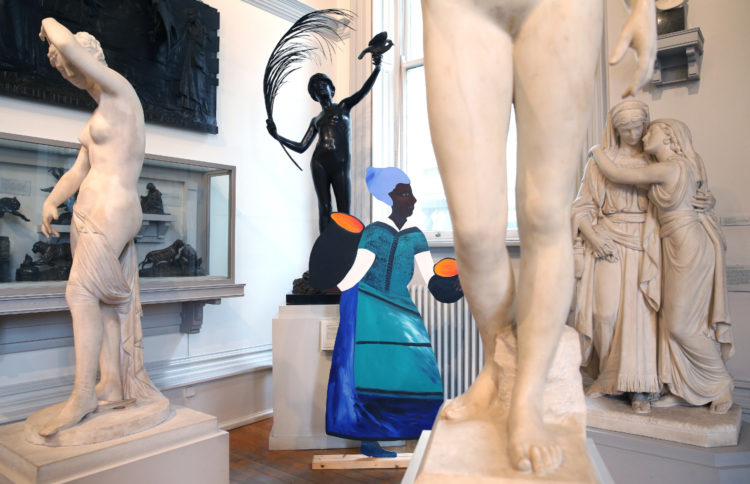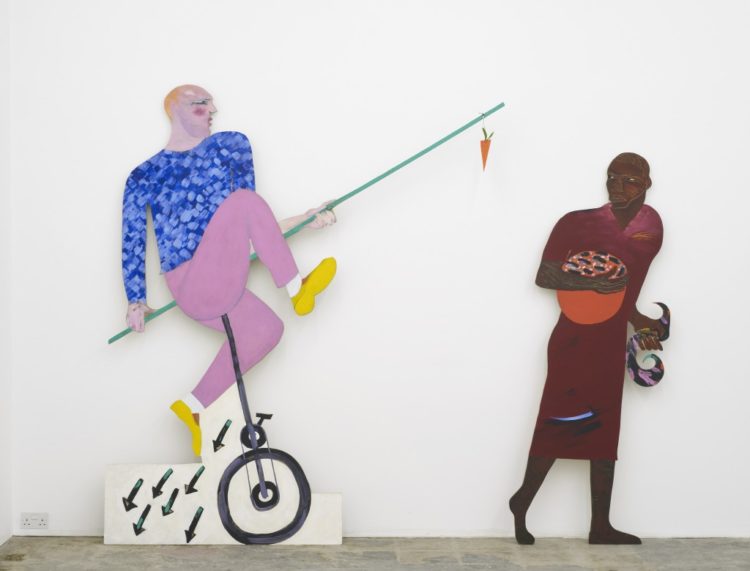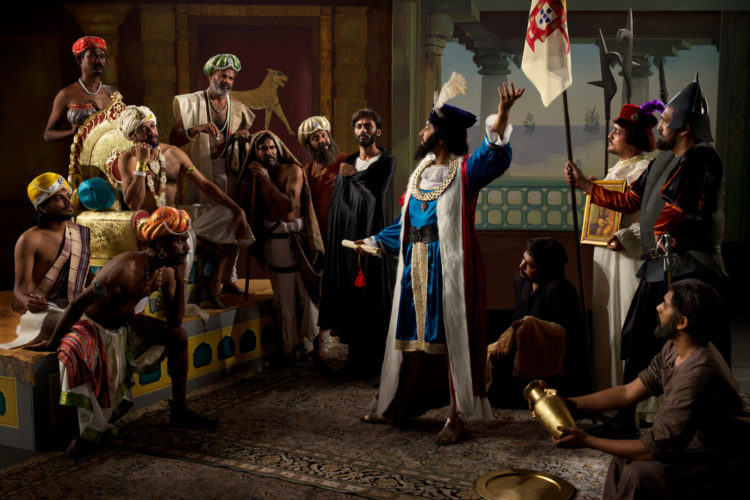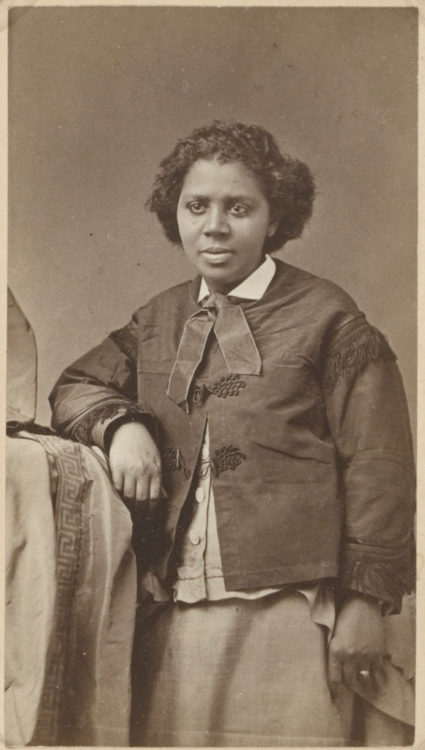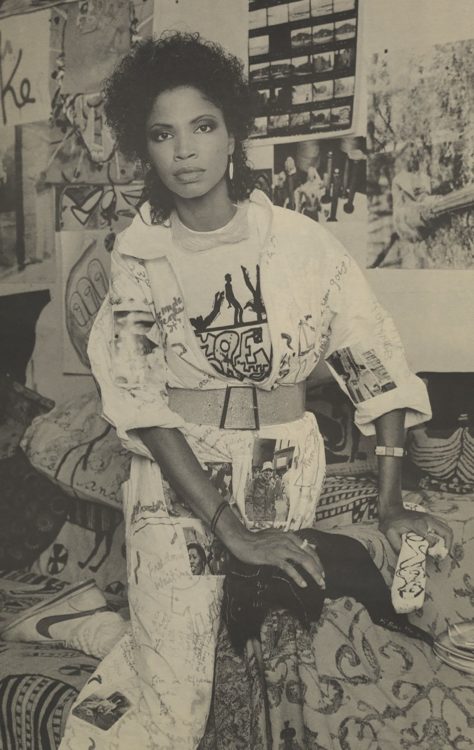Lubaina Himid
Tooby Michael, Lubaina Himid: Plan B, exh. cat., Tate Gallery St Ives, St Ives (13 November 1999–7 May 2000), St Ives, Tate Gallery St Ives, 1999
→Sulter Maud & Jill Morgan (ed.), Lubaina Himid, Revenge: A Masque in Five Tableaux, exh. cat., Rochdale Art Gallery (1992), Rochdale Art Gallery Editions, 1992
Lubaina Himid: Double Life, Bolton Museum and Art Gallery, Bolton, 29 September–1 December 2001
→Invisible Strategies, Modern Art Oxford, 21 January–30 April 2017
→Lubiania Himid: Naming the Money, Walker Art Gallery, Liverpool, 15 October 2017–18 March 2018
British visual artist.
Lubaina Himid is one of Britain’s most prominent artists. She is also a curator and a professor of contemporary art at the University of Lancashire. Her prolific pictorial production, which makes an abundant use of textile motifs, lettering, and bold colour blocks, questions the history of the portrait in Western painting. Her work utilises tales of the African diaspora within the framework of art history and combines them with an analysis of the surface’s materiality (canvas, paper, ceramic, and wood).
Large wooden veneer silhouettes are covered in paintings and collages and presented to the public as A Fashionable Marriage (1986). In this piece, a moral satire of the painting The Toilette from William Hogarth’s series Marriage A-la-Mode (circa 1743) serves as a basis for the racialised plot: at its centre stands a black woman, elegant and dynamic, surrounded by the figures of Margaret Thatcher, Ronald Reagan, an art critic, and a sitting teenage girl, and a series of critical readings. With just one scene, Himid manages to capture the world of art and politics in the 1980s.
Very early on, Gilane Tawadros identified in Himid’s works the articulation of a politics of difference with a semiotic technique that “situates black women and black women’s artistic discourse firmly within history.” (1989). As a feminist, Himid deconstructs the domination of bodies throughout history (Revenge, 1991-1992) and in the canons of accounts of Western art (Freedom and Change, 1984).
Hers is a style of painting with strong evocative potential. Le Rodeur (2016) is made up of bold acrylic colour blocks. Against a diptych of abstract interiors with windows opening onto the ocean stand figures whose theatrical postures summon up a mysterious mythology suspended in time: in 1819, a slave ship, the Rôdeur, left Le Havre for Bonny, on the African coast, where it illegally loaded slaves bound for Guadeloupe. There, the passengers it unloaded were suffering from an unknown illness that had turned them blind. Many passengers were gone: the crew had thrown them overboard so as not to have to feed a population whose condition forbade them from being sold. The artist’s taste for abstraction can also be found in the geometrical shimmering prisms in shades of blue on blue wash of her painting Zanzibar-Sea, Wave Goodbye Say Hello (1999), an evocation of her first journey back to her town of birth.
In 2007, on the occasion of her invitation to the bicentenary of the abolition of slavery in Great Britain at Lancashire Museums, the artist painted a variety of portraits, seascapes, ship hulls, names of animal species – especially shellfish – maps, and textile patterns onto 100 plates, tureens and serving dishes (Swallow Hard: The Lancaster Dinner Service, 2007). A daily reading of the Guardian, in which she highlighted news on black politicians, athletes, and celebrities (Negative Positives, 2007-2015) continues her critical approach of pre-existing material.
Himid graduated from the Royal College of Art and participated in the emergence of British Black Art. She played a central curatorial part in the visibility of mixed-race and black women artists and feminists in Great Britain, especially with Five Black Women Artists (London, Africa Centre, 1983), The Thin Black Line (London, Institute of Contemporary Arts, 1985), and as the director of the Elbow Room in London (which she founded with Maud Sulter in 1986).
As a co-finalist of the Turner Prize in 2017, Himid was very active on the art scene that year, particularly with her retrospective exhibition Invisible Strategies at Modern Art Oxford (21 January-30 April 2017) and Navigation Charts exhibition at Spike Island, Bristol (20 January-26 March 2017).
© 2018 Archives of Women Artists, Research and Exhibitions
© Archives of Women Artists, Research and Exhibitions, 2018




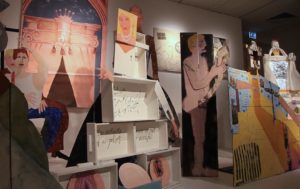 Turner Prize 2017: Sacha Craddock on Lubaina Himid
Turner Prize 2017: Sacha Craddock on Lubaina Himid 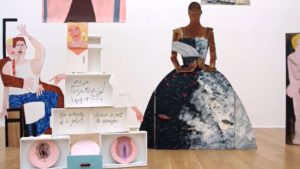 Lubaina Himid, three works
Lubaina Himid, three works 